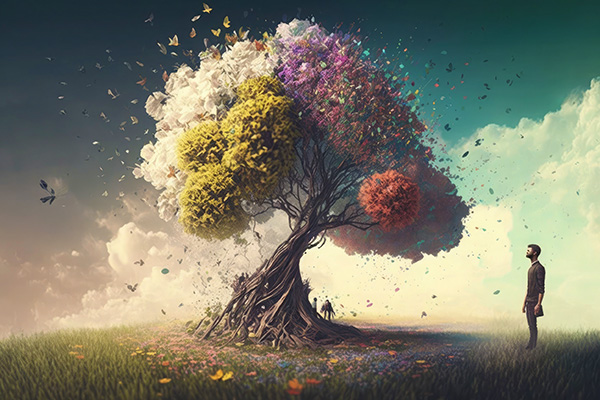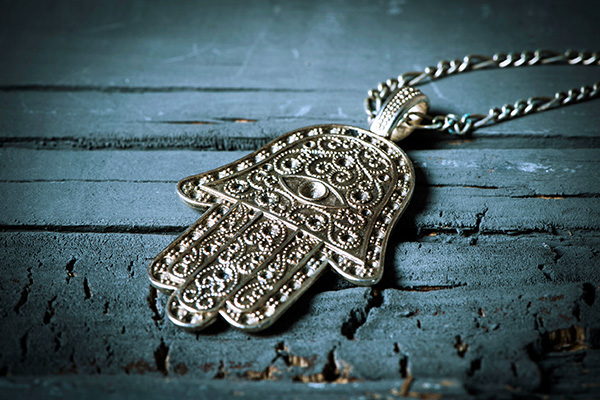religion
Spiritual Maturity Is A Lifelong Journey
 What does spiritual maturity mean to you? Every time I ask someone this question, I get all kinds of different answers.
What does spiritual maturity mean to you? Every time I ask someone this question, I get all kinds of different answers.
A Baby Boomer I asked said it meant going to church, donating to charities, studying the Bible, and following the Ten Commandments.
When I asked a Gen Z client, she said it meant minding your own business and not caring what others think of you because it is none of your business what they think. She also said she was a Wiccan and didn’t believe in wishing negative energy on others, because she knew it would only come back to her if she did.
I recently asked four people at a social gathering, and they had different opinions on the subject. They were in their 30s and 40s and had a young teenager with them. Interestingly, one thing they all agreed on was that it is spiritually mature to create healthy boundaries with family and friends for your own mental and spiritual well-being. One woman shared, for exxample, that if she hadn’t stopped hanging out with one of her friends, she would have hit rock bottom emotionally.
“I just could not put up with the way she treated me. I used to spend a lot of time stressing about the things she would say and do. I was always overthinking every toxic interaction with her, and our so-called friendship was not good for my mental state,” she explained. “So, for me, spiritual maturity is walking away from those who bring you down.”
Energy Imprint, Energy Cord, Or Entity Attachment?
 In my work, I often encounter people who are experiencing phenomena that are negatively affecting their energy field, causing them to suffer a loss of physical, mental, emotional, and spiritual health and well-being.
In my work, I often encounter people who are experiencing phenomena that are negatively affecting their energy field, causing them to suffer a loss of physical, mental, emotional, and spiritual health and well-being.
Usually these problems are simply due to their own negative thinking, or external negative energy imprints or residues that their aura has picked up from toxic people or environments. In many cases, it can be due to the energy cord of a dysfunctional or unhealthy romantic relationship or other types of energy cords with family, friends, or co-workers that are contaminating or draining their personal energy and vitality.
In some cases, however, these negative energy influences have a far more sinister origin that the “carrier” or victim is rarely aware of, while it is destroying their well-being and wreaking havoc in their lives.
The problem is that many people do not understand the difference between negative energy imprints, energy cords, and evil entity or spirit attachments. In my experience, the confusion is mainly due to the fact that the effects these three categories of negative energy phenomena have on people are often similar, leading to misinterpretation of the source or cause of these influences and disturbances.
A Christian Mystic’s Guide To Dealing With Pain
 Our search for the meaning of pain, hardship, and suffering is a profound and enduring human endeavor.
Our search for the meaning of pain, hardship, and suffering is a profound and enduring human endeavor.
Throughout history, our spiritual beliefs and religious teachings have helped us understand and find meaning in life’s challenges and painful experiences.
These interpretations provide comfort, guidance, and a sense of peace in the face of adversity as we learn that suffering has a purpose or can lead to spiritual growth, enlightenment, or a deeper connection with the divine.
Our spiritual quest to better understand pain is driven by a deep desire to make sense of life’s challenges and to discover how these difficult experiences fit into the larger tapestry of our existence.
Religions and spiritual wisdom traditions around the world offer different perspectives on pain and suffering, each with its own explanation for why these experiences occur and how they should be approached or understood.
These diverse perspectives all share certain common threads: that the origins of pain and suffering lie in the concept of duality; that there is meaning to be found in suffering; and that through faith, reflection, and spiritual practice we can transcend the pain caused by duality and connect with something greater than ourselves.
The Mystical Symbolism Of The Hamsa
 The well-known Hamsa symbol has a rich tapestry of esoteric meaning that spans several cultures and religious traditions, including Islam, Judaism, and Christianity. It is commonly used as a protective amulet, offering protection from the evil eye, as well as a talisman or good luck charm, bringing its wearer blessings in the form of happiness, health, and fortune.
The well-known Hamsa symbol has a rich tapestry of esoteric meaning that spans several cultures and religious traditions, including Islam, Judaism, and Christianity. It is commonly used as a protective amulet, offering protection from the evil eye, as well as a talisman or good luck charm, bringing its wearer blessings in the form of happiness, health, and fortune.
The Hamsa is also known as the Khamsa, Hamesh, the Hand of Fatima, the Hand of Miriam, or the Hand of Mary. The names “Hamsa” and “Khamsa” both refer to the number five in Arabic while “Hamesh” means five in Hewbrew, all symbolizing the five fingers of the hand.
In Islamic tradition, this famous esoteric hand is named after Fatima al-Zahra, the youngest daughter of the Prophet Muhammad and his first wife Khadija. Fatima is known by many titles in Islamic tradition, of which al-Zahra (meaning “the Radiant One”) is one of the most prominent. Her life, devotion to family and faith, and moral integrity are admired and serve as an inspiration to Muslims around the world.
In Jewish culture, the hand symbol is named after Miriam, the sister of Moses and Aaron, who was a prophetess and is an important figure in Judaism. In some Christian contexts, it is also known as the Hand of Mary, although it is less commonly referred to by this name. In this instance it is associated with Mary, the mother of Jesus, who is revered for her purity, grace, and maternal protection.


